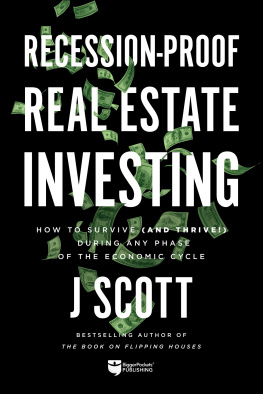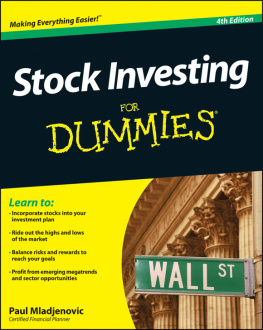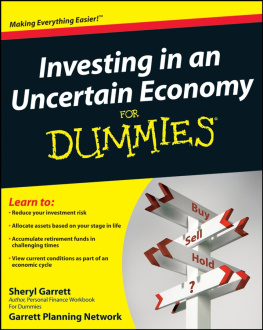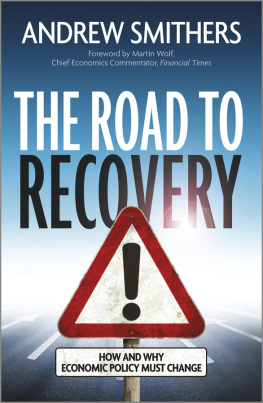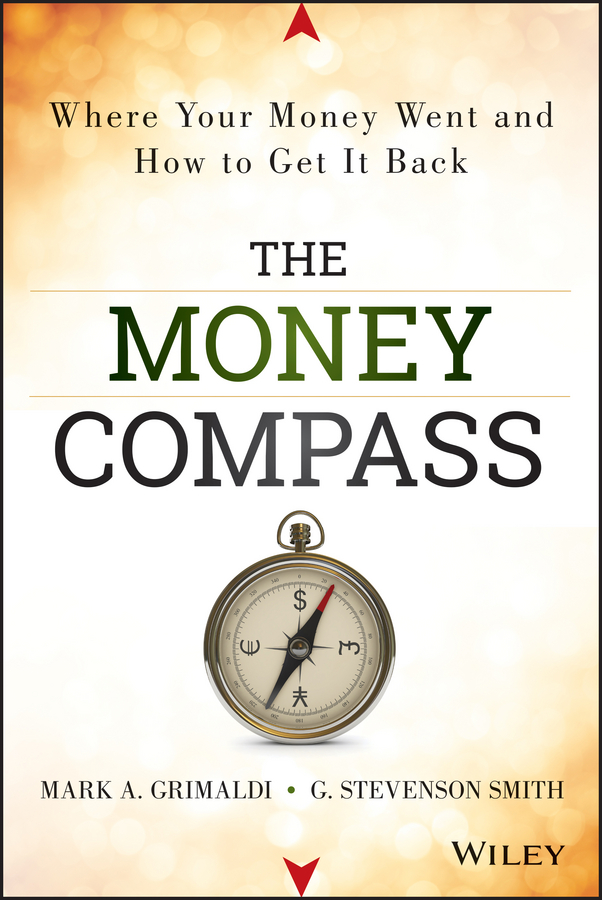Contents

Cover Design: Wiley
Cover Image: iStockphoto.com / onurdongel
Copyright 2014 by Mark A. Grimaldi and G. Stevenson Smith. All rights reserved.
Published by John Wiley & Sons, Inc., Hoboken, New Jersey.
Published simultaneously in Canada.
The Grimaldi Way is a creation of Mark A. Grimaldi, patent pending. EFS ID 17275606. Application number 14068508. Title: Method of Identifying Relative Strength of Mutual Funds.
No part of this publication may be reproduced, stored in a retrieval system, or transmitted in any form or by any means, electronic, mechanical, photocopying, recording, scanning, or otherwise, except as permitted under Section 107 or 108 of the 1976 United States Copyright Act, without either the prior written permission of the Publisher, or authorization through payment of the appropriate per-copy fee to the Copyright Clearance Center, Inc., 222 Rosewood Drive, Danvers, MA 01923, (978) 750-8400, fax (978) 646-8600, or on the Web at www.copyright.com . Requests to the Publisher for permission should be addressed to the Permissions Department, John Wiley & Sons, Inc., 111 River Street, Hoboken, NJ 07030, (201) 748-6011, fax (201) 748-6008, or online at http://www.wiley.com/go/permissions .
Limit of Liability/Disclaimer of Warranty: While the publisher and author have used their best efforts in preparing this book, they make no representations or warranties with respect to the accuracy or completeness of the contents of this book and specifically disclaim any implied warranties of merchantability or fitness for a particular purpose. No warranty may be created or extended by sales representatives or written sales materials. The advice and strategies contained herein may not be suitable for your situation. You should consult with a professional where appropriate. Neither the publisher nor author shall be liable for any loss of profit or any other commercial damages, including but not limited to special, incidental, consequential, or other damages.
For general information on our other products and services or for technical support, please contact our Customer Care Department within the United States at (800) 762-2974, outside the United States at (317) 572-3993 or fax (317) 572-4002.
Wiley publishes in a variety of print and electronic formats and by print-on-demand. Some material included with standard print versions of this book may not be included in e-books or in print-on-demand. If this book refers to media such as a CD or DVD that is not included in the version you purchased, you may download this material at http://booksupport.wiley.com . For more information about Wiley products, visit www.wiley.com .
Library of Congress Cataloging-in-Publication Data
Grimaldi, Mark.
The money compass : where your money went and how to get it back / Mark Grimaldi and Stevenson G. Smith.
pages cm
Includes index.
ISBN 978-1-118-61445-7 (hardback) ISBN 978-1-118-61465-5 (ePDF) ISBN 978-1-118-61461-7 (ePub)
1. Finance, PublicUnited States. 2. InvestmentsUnited States. I. Smith, Stevenson G. II. Title.
HG179.G7457 2014
332.024dc23
2013039125
To my amazing wife and children and all those who believed in a broken boy. Especially you Mom and Dad .
Mark Grimaldi
This book is dedicated to the America that once was .
Steve Smith
Preface
This book was written for those who know someone who has lost a great deal of their net worth during the Great Recession. It is written for those who know someone who has been disenfranchised by their government, educational system, or banking institutions. These organizations are on a path to separate Americans into two financial groups: the haves and the have nots.
Each chapter in the book makes suggestions as to how to fight back against the trend of separation by increasing your financial net worth. Some of the suggestions are small steps that anyone can take and others require more financial resources in order to implement. These steps are for the individual. They are not recommendations for passing new laws, special interest groups, or political parties.
The book is oriented toward all financial groups. It makes suggestions as to how to get back at the credit card companies that charge exorbitant rates and fees. It shows you how to use the current tax code to your advantage and not as a wealth destroyer. It identifies the worst piece of advice given to the small investor and the person who preaches it. It tells the story of the single biggest economic event of this century and how it helped cause the Great Recession. It forecasts the next big economic shock and how to profit from it. It identifies what you have lost in future potential because of a dysfunctional educational system and how to deal with that loss. The authors describe specific stock choices that will allow you to overcome all the losses you have been handed and forecasts are provided about what is coming up next in the economy.
If you believe the financial events that have been affecting your life are just inevitable coincidences and your financial situation is unchangeable, then you need to read this book and find out that concept is false. This book will give you the tools to stop being a victim of the system and start profiting from the system!
Acknowledgments
A special thanks to Laura Phillips, CFS; Julie Scheaffer; Frank Fabio, CPA; and my entire staff.
Chapter 1
Introduction
The Invisible Hand of Confiscation
In the absence of the gold standard, there is no way to protect savings from confiscation through inflation. There is no safe store of value.
The financial policy of the welfare state requires that there be no way for the owners of wealth to protect themselves.
Alan Greenspan, Gold and Economic Freedom,
The Objectivist (1966)
Why have I lost my money? And who took it? Thats the theme of this book. Millions of once rich and well-off Americans have watched their assets disappear in the Great Recession. These Americans are unemployed, and after years of work many have lost their homes, and their once rock-solid retirement plans are in ruins. Was it based on stupid financial decisions? Probably. Was it based on making financial decisions without a high level of financial literacy? Probably. Was it greed? Probably. Was it based on actions over which they had no control? Probably. Many Americans have become poorer, and the rest are worried.
The Probablies are not the only answer to these questions. This book looks at specific political and financial events that put Americans into complex situations where they are required to make decisions that they are unskilled to make. On the surface these financial choices appeared simple. Buy a house. Sign a mortgage. Invest in stocks.
Yet signing a mortgage is a complex decision, and the forces and policies behind the financing are hidden. Oh, and we want to note at the beginning of this book: Stocks dont always go up.
Topics to be covered in this book include:
- What to do about the housing depression.
- Bank credit cards and uneducated borrowersan interesting combination
- Making choices in fund investments
- Greenspan depression and the coming Recession
- 36 days of infamy in the 2000 Presidential election
- The federal debt bomb
- Collapsing educational systems
- Whats going on with unemployment?
But firstChapter 1 discusses four aspects of todays economy that have led to the financial pickle the United States and you are facing today. It begins with the fourth branch of government.



